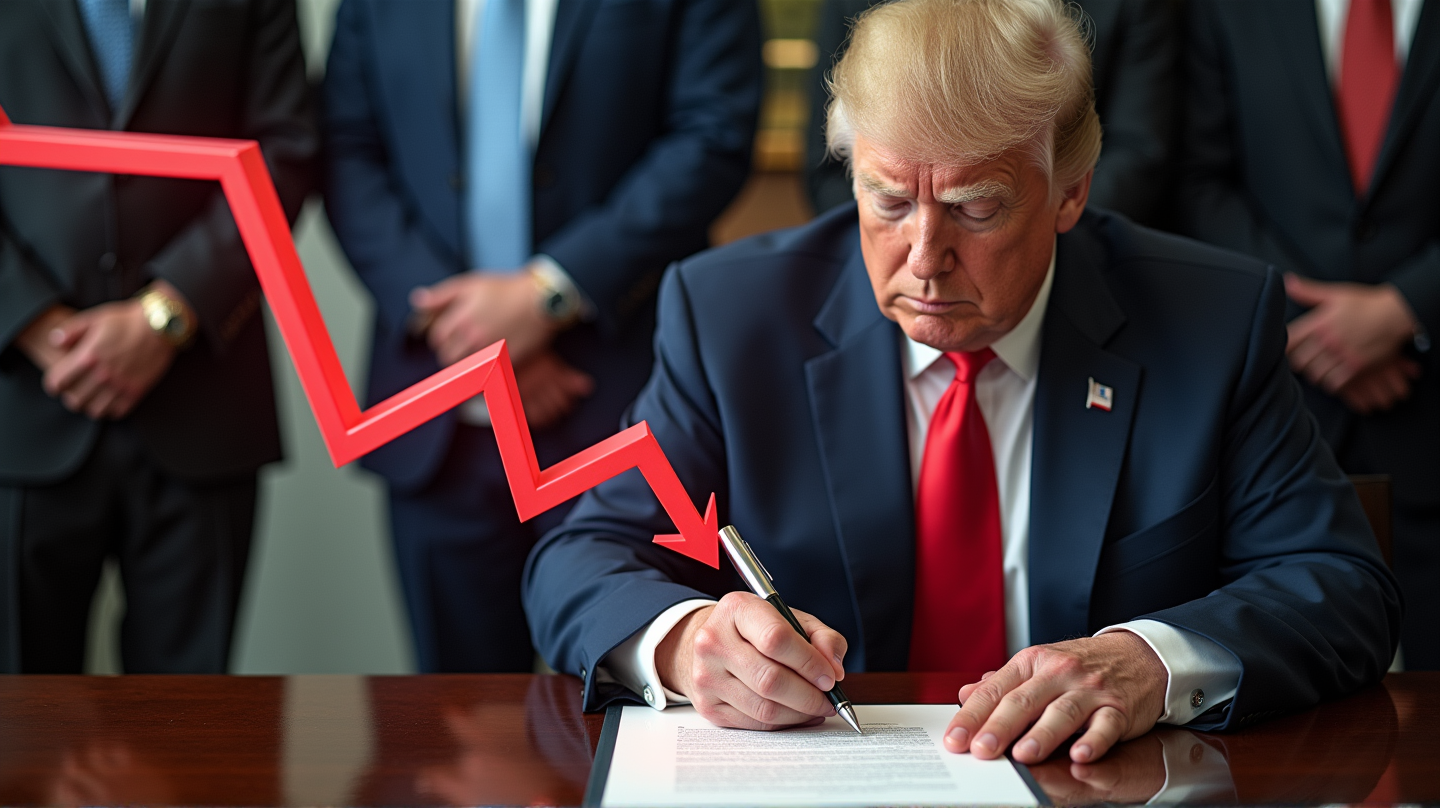Economic Ripples: Trump's Tariffs Shake Global Markets
Explore the global economic implications of Trump's new tariffs as experts dissect potential stagflation risks and market reactions.

Unveiling New Tariffs
In a bold move reshaping the trade landscape, President Donald Trump announced ambitious new tariffs targeting nearly 70 countries, with rates ranging from 10% to 41%. Lauded by some as a necessary step towards a “new system of trade,” these tariffs slated for implementation on August 7, startled markets.
Immediate Stocks Reaction
U.S. stocks took a nosedive soon after the announcement, compounded by a weak jobs report, hinting at a brewing storm of stagflation—stagflation being the unwelcome blend of an economic slowdown paired with rising prices. Experts from Moody’s Analytics and EY underscore these fears, noting the tariffs’ potential to dart the economy into a quagmire.
Jobs Data: A Warning Sign
New jobs data heralded grim tidings, showing a marked slowdown in hiring. July’s addition of 73,000 jobs starkly contrasts the previous monthly average of 130,000, raising eyebrows. Revisions for May and June cut previously optimistic job growth numbers, stirring further unrest.
White House’s Mixed Signals
The Trump administration initially expressed disfavor with the job data downturn. Now, with Trump’s domestic policies and tariff strategy gaining clarity, economic advisors express a cautious optimism as they foresee a strengthening economic picture, thanks to resolved uncertainties.
Corporate Caution
The rising effective tariff rate to the highest since 1934 pushes companies to tread carefully, with many opting to postpone investments. Delayed business activities may ripple into hiring slumps and dwindling consumer spending, EY’s economist Gregory Daco warns.
Inflation and Economic Balancing Acts
Analysts anticipate ongoing tariff-induced inflation, with the burden likely trickling down to consumers as import prices soar. Inflation, currently edging above the Federal Reserve’s target, prompts critical consideration on interest rate adjustments. As stated in ABC News, the threat of stagflation demands a nuanced strategy from the Fed to balance inflation control with economic growth.
Market Outlook
The intersection of tariffs, inflation, and economic strategy leaves businesses and policymakers in a dance on a precarious high wire. The Federal Reserve faces a conundrum with each decision promising ripple effects across the economy—raising rates might stifle growth, while lowering them could exacerbate inflation.
Stay tuned as market analysts and economic specialists watch the unfolding global domino effect of these tariff policies.